BLOG - Page 21
Recently created mixtures:

Sea-Buckthorn Macerated oil
February 7, 2019

Home made air freshener
June 29, 2016

Homemade Dog-rose distillate
June 28, 2016

Homemade jasmine distillate
June 22, 2016

Moxibustion treatment with Moxa stick
May 30, 2016

Face and body gentle oil cleanser
May 26, 2016
BLOG / LATEST ADDITIONS!
Coconut Water (Cocos Nucifera) ☸ Ingredients ☸ Base / General


Naturally refreshing, Coconut Water has a sweet, nutty taste. Not to be confused withhigh - fat Coconut Milk or oil, Coconut Water is a clear liquid in the fruit’s center.
Coconut Water is the clear liquid inside young green Coconuts. In early development, it serves as a suspension for the endosperm of the Coconut during the nuclear phase of development. As growth continues, the endosperm matures into its cellular phase and deposits into the rind of the Coconut Meat.
Fresh Coconuts are typically harvested from the tree while they are green. A hole may be bored into the Coconut to provide access to the liquid and meat. In young Coconuts, the liquid and air may be under some pressure and may spray slightly when the inner husk is first penetrated.
In general, young and slightly immature Coconuts gathered from the Coconut tree after they reach about 5 - 7 months of age for the purpose of reaping its drink. Coconuts which have fallen to the ground are susceptible to rot and damage from insects or animals.
Each Coconut may contain about 200 to 1000 ml of water depending upon cultivar type and size. Any nuts younger than five months of age tend to be bitter in taste and devoid of nutrients.
Coconut Water has long been a popular drink in the tropical countries where it is available fresh, canned, or bottled.
Naturally refreshing, Coconut Water has a sweet, nutty taste. Not to be confused with high - fat coconut milk or oil, Coconut water is a clear liquid in the fruit’s center.
At home, raw tender Coconuts can be kept at room temperature for about 5 - 10 days. Once opened, its liquid soon turns sour and off - flavored due to intense enzymaticactivity. Instead, store it inside the refrigerator if not used immediately.
Chemical structure:
The water is actually obtained by opening a tender, green, healthy, and undamaged Coconut. Inside, it's clear liquid is sweet, and sterile and composed of unique chemicals such as sugars, Vitamins, minerals, electrolytes, enzymes, amino acids, cytokine, and phyto - hormones.
Coconut Water carries a very good amount of electrolyte potassium. 100 ml of Water has 250 mg of potassium and 105 mg of sodium. Together, these electrolytes help replenish electrolyte deficiency in the body due todiarrhea (loose stools).
Further, fresh Coconut Water has a small amount of Vitamin - C (Ascorbic acid). It provides about 2,4 mg or 4% of RDA. Vitamin C is a water - soluble ant-oxidant.
Coconut Water is the clear liquid inside young green Coconuts. In early development, it serves as a suspension for the endosperm of the Coconut during the nuclear phase of development. As growth continues, the endosperm matures into its cellular phase and deposits into the rind of the Coconut Meat.
Fresh Coconuts are typically harvested from the tree while they are green. A hole may be bored into the Coconut to provide access to the liquid and meat. In young Coconuts, the liquid and air may be under some pressure and may spray slightly when the inner husk is first penetrated.
In general, young and slightly immature Coconuts gathered from the Coconut tree after they reach about 5 - 7 months of age for the purpose of reaping its drink. Coconuts which have fallen to the ground are susceptible to rot and damage from insects or animals.
Each Coconut may contain about 200 to 1000 ml of water depending upon cultivar type and size. Any nuts younger than five months of age tend to be bitter in taste and devoid of nutrients.
Coconut Water has long been a popular drink in the tropical countries where it is available fresh, canned, or bottled.
Naturally refreshing, Coconut Water has a sweet, nutty taste. Not to be confused with high - fat coconut milk or oil, Coconut water is a clear liquid in the fruit’s center.
At home, raw tender Coconuts can be kept at room temperature for about 5 - 10 days. Once opened, its liquid soon turns sour and off - flavored due to intense enzymaticactivity. Instead, store it inside the refrigerator if not used immediately.
Chemical structure:
The water is actually obtained by opening a tender, green, healthy, and undamaged Coconut. Inside, it's clear liquid is sweet, and sterile and composed of unique chemicals such as sugars, Vitamins, minerals, electrolytes, enzymes, amino acids, cytokine, and phyto - hormones.
Coconut Water carries a very good amount of electrolyte potassium. 100 ml of Water has 250 mg of potassium and 105 mg of sodium. Together, these electrolytes help replenish electrolyte deficiency in the body due todiarrhea (loose stools).
Further, fresh Coconut Water has a small amount of Vitamin - C (Ascorbic acid). It provides about 2,4 mg or 4% of RDA. Vitamin C is a water - soluble ant-oxidant.
Submitted by OperaDreamhouse (June 23, 2015)
Olive Squalane ☸ Ingredients ☸ Base / General


Olive Squalane is a high purity vegetable squalane obtained from Olives. Olive Squalane is a botanical lipid that mirrors human lipids in molecular structure and weight (scientists found that the skin's sebaceous glands synthesized approximately 10 - 12% Squalane). The Olive Squalane is the plant - derived alternative to the animal - derived (shark liver oil) of the past.
Squalene is found naturally in thesebum of human skin and is believed to lubricate and protect skin.
Squalene is found naturally in thesebum of human skin and is believed to lubricate and protect skin.
Submitted by OperaDreamhouse (June 23, 2015)
Olive Squalane ☸ Ingredients ☸ Beauty / Cosmetics


This valuable lipid is extremely compatible with the skin and is safe for all skin types, making it a great choice for regenerative skin care, and anti-agingproducts.
Submitted by OperaDreamhouse (June 23, 2015)
Amaranth Seed Oil (Amaranthus Caudatus) ☸ Base oils ☸ Base / General


Amaranthus, collectively known as Amaranth, is a cosmopolitan genus of annual or short lived perennial plants. Amaranth is grown in Asia and the Americas and harvested primarily for its grain, which is used as a food source forbread, pasta, and infant food.
Amaranth seed is called a grain by many, but technically it isn’t a truegrain. Amaranth tastes similar to other grains, and is used in much the same way. Quinoa is also in the Amaranthaceae family, and is also a pseudograin.
Catkin - like cymes of densely packed flowers grow in summer or autumn. Approximately 60 species are recognized, with inflorescences and foliage ranging from purple and red to green or gold. Members of thisgenus share many characteristics and uses with members of the closely related genus Celosia.
However, there are several other Amaranthus that are grown in other places of the world, that are used as food, both for the leaves and the seed.
Grain Amaranths produces a protein - rich seed. Each seed is only about 1/2 or 1/3 the size of a Quinoa seed, but each plant can produce up to 100,000 seeds or more, and they are easy to harvest.
Seeds from wild varieties are black, and seeds from the cultivated varieties are lighter in color (white, light brown, and pinkish - red seeds). Amaranth seems to be enjoying a slight rise in popularity.
"Amaranth" derives from Greek (Amarantos), "Unfading" with the Greek word for "Flower"(Anthos), factoring into the word's development as "Amaranth." The more accurate "Amarant" is an archaic variant.
Conventional, organic. Symbol of immortality in Greek, Amaranth is the oldest cultivated plant reputed never to fade. Obtained from Amaranth seeds. Contains Over 60% of unsaturated acids. Mainly composed of linoleic acid (omega-6) and oleic acid (omega-9). High content in Squalane.
The oil we use has been obtained via the latest and arguably most efficient method of extraction - Supercritical CO2. Carbon Dioxide which has been pressurised until it has become "Supercritical" (in two states - gas and liquid properties at the same time) is passed through the plant material acting like a solvent pushing out all of the raw active agents.
Once all of the constituents have been extractedthe pressure is released, the Carbon Dioxide becomes gas again leaving no trace, and you’re left with a complex extract including many particles you wouldn’t get through steam distillation.
Chemical structure:
Amaranth oil is a great of value. It contains about 77 % of non - saturated fatty acids (about 50 % of linolenic and linoleic acids, squalene and Vitamin E in the rare form of tocotriene which takes part in the biosynthesis of cholesterol.
Most importantly it is an almost unique extract in that is has up to 12% Squalene content.
Fatty oil with a high content of polyunsaturated fatty acids including 25 - 35% oleic acid and 42-52% linoleic acid as well as a 6 - 12% Squalene content.
Amaranth seed is called a grain by many, but technically it isn’t a truegrain. Amaranth tastes similar to other grains, and is used in much the same way. Quinoa is also in the Amaranthaceae family, and is also a pseudograin.
Catkin - like cymes of densely packed flowers grow in summer or autumn. Approximately 60 species are recognized, with inflorescences and foliage ranging from purple and red to green or gold. Members of thisgenus share many characteristics and uses with members of the closely related genus Celosia.
However, there are several other Amaranthus that are grown in other places of the world, that are used as food, both for the leaves and the seed.
Grain Amaranths produces a protein - rich seed. Each seed is only about 1/2 or 1/3 the size of a Quinoa seed, but each plant can produce up to 100,000 seeds or more, and they are easy to harvest.
Seeds from wild varieties are black, and seeds from the cultivated varieties are lighter in color (white, light brown, and pinkish - red seeds). Amaranth seems to be enjoying a slight rise in popularity.
"Amaranth" derives from Greek (Amarantos), "Unfading" with the Greek word for "Flower"(Anthos), factoring into the word's development as "Amaranth." The more accurate "Amarant" is an archaic variant.
Conventional, organic. Symbol of immortality in Greek, Amaranth is the oldest cultivated plant reputed never to fade. Obtained from Amaranth seeds. Contains Over 60% of unsaturated acids. Mainly composed of linoleic acid (omega-6) and oleic acid (omega-9). High content in Squalane.
The oil we use has been obtained via the latest and arguably most efficient method of extraction - Supercritical CO2. Carbon Dioxide which has been pressurised until it has become "Supercritical" (in two states - gas and liquid properties at the same time) is passed through the plant material acting like a solvent pushing out all of the raw active agents.
Once all of the constituents have been extractedthe pressure is released, the Carbon Dioxide becomes gas again leaving no trace, and you’re left with a complex extract including many particles you wouldn’t get through steam distillation.
Chemical structure:
Amaranth oil is a great of value. It contains about 77 % of non - saturated fatty acids (about 50 % of linolenic and linoleic acids, squalene and Vitamin E in the rare form of tocotriene which takes part in the biosynthesis of cholesterol.
Most importantly it is an almost unique extract in that is has up to 12% Squalene content.
Fatty oil with a high content of polyunsaturated fatty acids including 25 - 35% oleic acid and 42-52% linoleic acid as well as a 6 - 12% Squalene content.
Submitted by OperaDreamhouse (June 22, 2015)
Matcha Tea Whisk (Chasen) ☸ Tools ☸ Base / General
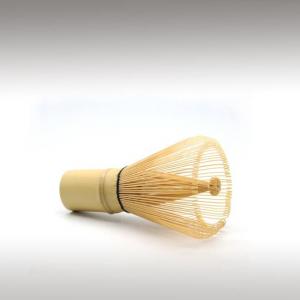

Chasen are bamboo Whisks used to prepare Matcha. They are hand - carved from a single piece of bamboo.
There are differences in their style according to the type of bamboo they are made from, the shape of the tines, the number of tines, the thickness of the bamboo, the length of the bamboo, the color of the thread that is woven around the bottom of the tines, and so on.
Different schools of Chanoyu prefer different styles and employ different styles depending on the particular kind of tea or tea - preparation stylefor which it is to be used.
There are differences in their style according to the type of bamboo they are made from, the shape of the tines, the number of tines, the thickness of the bamboo, the length of the bamboo, the color of the thread that is woven around the bottom of the tines, and so on.
Different schools of Chanoyu prefer different styles and employ different styles depending on the particular kind of tea or tea - preparation stylefor which it is to be used.
For instance, there are specific styles for preparing Thin tea (Usucha), Thick tea (Koicha), tea offerings in tenmoku tea bowls, tea in tall cylindrical tea bowls, for including in a portable boxed tea set (Chabako), for outdoor tea - making, for New Year's, and for other special auspicious occasions.
Also, there are styles such as the "Rikyū-gata" the style attributed to Sen Rikyū's son Dōan and referred to as the "Dōan-gonomi" style, and other such "favored" (Konomi) styles of famous tea masters, so that the styles have continued to increase.
Generally, the kind used for whisking thin tea (Usucha) has 80, 100, or 120 fine tines.
In the Japanese tea ceremony, it is recommended to use a new Chasen on each occasion. However, for casual tea drinkers like ourselves, it is much moreeconomicalto reuse.
A small amount of Matcha is placed into the bowl, traditionally using abamboo scoop called a Chashaku, and then a modicum of hot (not boiling: 70–85 °C) water is added. The mixture is then whisked to a uniform consistency, using a bamboo whisk known as a "Chasen".
Taking care of whisk:
The first thing you will need is a Whisk keeper. Store your Chasen on this device. It will help the bambootines keep their shape, prolonging its lifespan.
Secondly, clean it after each use. Make sure it isn’t in contact with moisture for long periods of time. The bamboo can easily grow mold on it otherwise.
Finally, be sure to inspect your chasen before each use for broken tines. More for your own safety, remove any broken parts before whisking.
A brand new Chasen will have a core that is twisted around, and tines that curl up at the end. However, after a few uses, the tines will straighten out, and the core will bloom. This is to be expected.
Submitted by OperaDreamhouse (June 22, 2015)
Perilla Seed Oil (Perilla Frutescens) ☸ Base oils ☸ Base / General


Perilla is an herb of the mint family, Lamiaceae. Though known to several cultures by different names, the disparate varieties are now classified under the single species Perilla Frutescens.
Perilla Frutescens the aromatic leafy herb called by its Korean name Jasoyup, its Japanese name Shiso, which in turn is a loan word from Chinese: Pinyin, Zĭsū, Wade - Giles: Tsu-su.
The plant occurs in red (purple - leaved) or green - leaved forms. It also has a less fashionable translated name "Beefsteak Plant", but starting around the 1980, with the rise of popularity of Japanese cuisine, it has become increasingly more chic for the mass media to refer to it as Shiso.
Suggested native origins are mountainous terrains of India and China, although some books say Southeast Asia.
Perilla oil is obtained from the seeds of herbs of the genus Perilla, usually from the species Perilla Frutescens. The seeds contain 35 to 45% oil which is obtained by pressing.
In parts of Asia, Perilla oil is used as an edible oil that is valued more for its medicinal benefit than its flavor. The Perilla was introduced into Japan around the 8th to 9th century.
Until around the Sengoku period (early 16th century) in Japan, Perilla oil was important for fueling oil lamps, until being was overtaken by Rapeseed oil.
Perilla oil also is important in the manufacture of printing inksand linoleum, and in more ancient times was a critical component in creating durable earthen floors.
Chemical structure:
Perilla oil is a very rich source of the omega - 3 fatty acid alpha-linolenic acid. About 50 to 60% of the oil consists of acid alpha - linolenic.
In terms of dietary compounds in the plant, the pronounced flavor and aroma of Shiso derives from Perillaldehyde, but this substance is lacking in the perilla variety.
Other aromatic essential oils present are limonene, caryophyllene, and farnesene.
Perilla Frutescens the aromatic leafy herb called by its Korean name Jasoyup, its Japanese name Shiso, which in turn is a loan word from Chinese: Pinyin, Zĭsū, Wade - Giles: Tsu-su.
The plant occurs in red (purple - leaved) or green - leaved forms. It also has a less fashionable translated name "Beefsteak Plant", but starting around the 1980, with the rise of popularity of Japanese cuisine, it has become increasingly more chic for the mass media to refer to it as Shiso.
Suggested native origins are mountainous terrains of India and China, although some books say Southeast Asia.
Perilla oil is obtained from the seeds of herbs of the genus Perilla, usually from the species Perilla Frutescens. The seeds contain 35 to 45% oil which is obtained by pressing.
In parts of Asia, Perilla oil is used as an edible oil that is valued more for its medicinal benefit than its flavor. The Perilla was introduced into Japan around the 8th to 9th century.
Until around the Sengoku period (early 16th century) in Japan, Perilla oil was important for fueling oil lamps, until being was overtaken by Rapeseed oil.
Perilla oil also is important in the manufacture of printing inksand linoleum, and in more ancient times was a critical component in creating durable earthen floors.
Chemical structure:
Perilla oil is a very rich source of the omega - 3 fatty acid alpha-linolenic acid. About 50 to 60% of the oil consists of acid alpha - linolenic.
In terms of dietary compounds in the plant, the pronounced flavor and aroma of Shiso derives from Perillaldehyde, but this substance is lacking in the perilla variety.
Other aromatic essential oils present are limonene, caryophyllene, and farnesene.
Submitted by OperaDreamhouse (June 21, 2015)
Perilla Seed Oil (Perilla Frutescens) ☸ Base oils ☸ Food / Cooking


Korean cuisine uses green leaves of the oilseed variety, which have a flavor different from Shiso. It also uses the Perilla seeds, known as "Wild Sesame", a source of Perilla oil rich inacid alpha-linolenicomega - 3 fatty acids.
The flowers, fruits, and seeds of Shiso are used as a condiment or spice in Japan.
In Korea, Perilla is mainly cultivated in Chungcheong, Gyeongsang, and Jeolla Province, so the locals there often consume Perilla oil.
In Korean cuisine, it is used for marinating namul (seasoned vegetable dish), coating grilled gim (Korean laver), or pan - Frying Jeon (Pancake-like dish), where it is called deul Gireum or Beopyu in Korean. In North Korea, it is called Deulkkae Gireum.
The flowers, fruits, and seeds of Shiso are used as a condiment or spice in Japan.
In Korea, Perilla is mainly cultivated in Chungcheong, Gyeongsang, and Jeolla Province, so the locals there often consume Perilla oil.
In Korean cuisine, it is used for marinating namul (seasoned vegetable dish), coating grilled gim (Korean laver), or pan - Frying Jeon (Pancake-like dish), where it is called deul Gireum or Beopyu in Korean. In North Korea, it is called Deulkkae Gireum.
Submitted by OperaDreamhouse (June 21, 2015)
Perilla Seed Oil (Perilla Frutescens) ☸ Base oils ☸ Medicine / Health


Perilla is called Zisu in Chinese and is traditionally used in Chinese medicine, and has been shown to stimulate interferon activity and thus, the body's immune system.
It is fried in oil with Garlic or Ginger in the wok, and eaten as a dish with meals. The Sū in its name (formed by addition of the herb radical to a homophone meaning "Revive") was the namesake for Mount Gusu, the peak which gave Suzhou its name. The Manchu people's festival of "Food Extermination Day" calls for Perilla to be eaten by bannermen.
It is fried in oil with Garlic or Ginger in the wok, and eaten as a dish with meals. The Sū in its name (formed by addition of the herb radical to a homophone meaning "Revive") was the namesake for Mount Gusu, the peak which gave Suzhou its name. The Manchu people's festival of "Food Extermination Day" calls for Perilla to be eaten by bannermen.
It is used to ease the symptoms of the common cold.
Submitted by OperaDreamhouse (June 21, 2015)
Ground Ceylon Cinnamon (Cinnamomum Zeylanicum) ☸ Ingredients ☸ Base / General
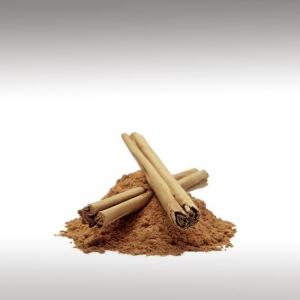

Cinnamon is a spice obtained from the inner bark of several trees from the genus Cinnamomum. Cinnamon is the name for perhaps a dozen species of trees and the commercial spice products that some of them produce. All are members of the genus Cinnamomum in the family Lauraceae.
The English word Cinnamon, attested in English since the 15th century, derives from the Greek Kinnámōmon (later Kínnamon), via Latin and medieval French intermediate forms. The Greek in turn was borrowed from a Phoenician word, which would have been akin to the related Hebrew Qinnamon.
Though its source was kept mysterious in the Mediterranean world for centuries by the middlemen who handled the spice trade, to protect their monopoly as suppliers, Cinnamon is native to Bangladesh, Sri Lanka, the Malabar Coast of India, and Burma.
The old botanical synonym for the tree - Cinnamomum Zeylanicum - is derived from Sri Lanka's former name, Ceylon. Sri Lanka still produces 80 - 90% of the world's supply of Cinnamomum Verum, and it is also cultivated on a commercial scale in Seychelles and Madagascar.
Cinnamomum Verum (Cinnamomum Zeylanicum), called "True Cinnamon tree" or Ceylon Cinnamon tree is a small evergreen tree, native to Sri Lanka. Among other species, its inner bark is used to make Cinnamon.
Cinnamon was so highly prized among ancient nations that it was regarded as a gift fit for monarchs and even for a god.
Indonesian rafts transported cinnamon directly from the Moluccas to East Africa , where local traders then carried it north to Alexandria in Egypt. Venetian traders from Italy held a monopoly on the spice trade in Europe, distributing cinnamon from Alexandria. The disruption of this trade by the rise of other Mediterranean powers, such as the Mamluk sultans and the Ottoman Empire, was one of many factors that led Europeans to search more widely for other routes to Asia.
When Portuguese traders landed in Ceylon (Sri Lanka), they restructured the traditional production and management of cinnamon by the Sinhalese. They established a fort on the island in 1518 and protected Ceylon as their cinnamon monopoly for over a hundred years. Later, Sinhalese held the monopoly for Cinnamon in Ceylon.
Now Sri Lanka produces 80 - 90% of the world's supply of Cinnamomum Verum, but that is the only species grown there. Cinnamomum verum is also cultivated on a commercial scale in Seychelles and Madagascar.
Sri Lanka Cinnamon has a very thin, smooth bark with a light - yellowish brown colour and a highly fragrant aroma.
CeylonCcinnamon, using only the thin inner bark, has a lighter brown colour, a finer, less dense and more crumbly texture, and is considered to be subtler and more aromatic in flavour than cassia (Cinnamomum cassia), losing much of its flavour during cooking. Ceylon Cinnamon sticks (quills) have many thin layers and can easily be made into powder using a coffee or spice grinder, whereas Cassia sticks are much harder.
In the case of stick Cinnamon there are also certain features of the sticks you might want to look for in order to determine whether your Cinnamon is Ceylon Cinnamon or Cassia Cinnamon. One of those features involves the texture of the sticks when you look downward at a stick so that you can see the end.
When Cinnamon sticks are rolled from the thick bark of the Cassia plants, they look exactly as described - a one - piece, thick bark layer that does not show multiple layers of any kind. In the case of Ceylon Cinnamon sticks, since the plant bark is thinner, you may be able to see multiple layers of a thinner bark. That thinner layering of bark is one indication that your Cinnamon sticks are made from Ceylon Cinnamon.
Another feature is the typically darker and deeper reddish color shade of Ceylon Cinnamon sticks. Finally, the thicker and harder bark of Cassia - type cinnamon sticks often prevents them from having small pieces that have broken off, where Ceylon Cinnamon is more fragile and easily broken.
The English word Cinnamon, attested in English since the 15th century, derives from the Greek Kinnámōmon (later Kínnamon), via Latin and medieval French intermediate forms. The Greek in turn was borrowed from a Phoenician word, which would have been akin to the related Hebrew Qinnamon.
Though its source was kept mysterious in the Mediterranean world for centuries by the middlemen who handled the spice trade, to protect their monopoly as suppliers, Cinnamon is native to Bangladesh, Sri Lanka, the Malabar Coast of India, and Burma.
The old botanical synonym for the tree - Cinnamomum Zeylanicum - is derived from Sri Lanka's former name, Ceylon. Sri Lanka still produces 80 - 90% of the world's supply of Cinnamomum Verum, and it is also cultivated on a commercial scale in Seychelles and Madagascar.
Cinnamomum Verum (Cinnamomum Zeylanicum), called "True Cinnamon tree" or Ceylon Cinnamon tree is a small evergreen tree, native to Sri Lanka. Among other species, its inner bark is used to make Cinnamon.
Cinnamon was so highly prized among ancient nations that it was regarded as a gift fit for monarchs and even for a god.
Indonesian rafts transported cinnamon directly from the Moluccas to East Africa , where local traders then carried it north to Alexandria in Egypt. Venetian traders from Italy held a monopoly on the spice trade in Europe, distributing cinnamon from Alexandria. The disruption of this trade by the rise of other Mediterranean powers, such as the Mamluk sultans and the Ottoman Empire, was one of many factors that led Europeans to search more widely for other routes to Asia.
When Portuguese traders landed in Ceylon (Sri Lanka), they restructured the traditional production and management of cinnamon by the Sinhalese. They established a fort on the island in 1518 and protected Ceylon as their cinnamon monopoly for over a hundred years. Later, Sinhalese held the monopoly for Cinnamon in Ceylon.
Now Sri Lanka produces 80 - 90% of the world's supply of Cinnamomum Verum, but that is the only species grown there. Cinnamomum verum is also cultivated on a commercial scale in Seychelles and Madagascar.
Sri Lanka Cinnamon has a very thin, smooth bark with a light - yellowish brown colour and a highly fragrant aroma.
CeylonCcinnamon, using only the thin inner bark, has a lighter brown colour, a finer, less dense and more crumbly texture, and is considered to be subtler and more aromatic in flavour than cassia (Cinnamomum cassia), losing much of its flavour during cooking. Ceylon Cinnamon sticks (quills) have many thin layers and can easily be made into powder using a coffee or spice grinder, whereas Cassia sticks are much harder.
In the case of stick Cinnamon there are also certain features of the sticks you might want to look for in order to determine whether your Cinnamon is Ceylon Cinnamon or Cassia Cinnamon. One of those features involves the texture of the sticks when you look downward at a stick so that you can see the end.
When Cinnamon sticks are rolled from the thick bark of the Cassia plants, they look exactly as described - a one - piece, thick bark layer that does not show multiple layers of any kind. In the case of Ceylon Cinnamon sticks, since the plant bark is thinner, you may be able to see multiple layers of a thinner bark. That thinner layering of bark is one indication that your Cinnamon sticks are made from Ceylon Cinnamon.
Another feature is the typically darker and deeper reddish color shade of Ceylon Cinnamon sticks. Finally, the thicker and harder bark of Cassia - type cinnamon sticks often prevents them from having small pieces that have broken off, where Ceylon Cinnamon is more fragile and easily broken.
Submitted by OperaDreamhouse (June 17, 2015)
Ghee (Clarified Butter) ☸ Ingredients ☸ Base / General
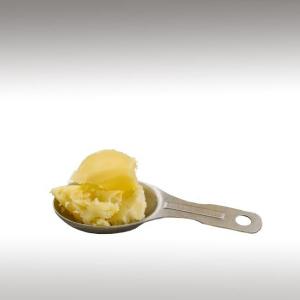

Ghee is a class of Clarified Butter that originated in ancient India and is commonly used in South Asian and Iranian cuisines, traditionalmedicine, and religious rituals.
Clarified Butter is milk fat rendered from Butter to separate the milk solids and water from the butterfat. Typically, it is produced by melting Butter and allowing the components to separate by density. The Water evaporates, some solids float to the surface and are skimmed off, and the remainder of the milk solids sink to the bottom and are left behind when the butter fat (which would then be on top) is poured off.
Traditionally, Ghee (Go-Ghṛta) is always made from the milk of cows, which are considered sacred, and it is a sacred requirement in Vedic Yajña and Homa (Fire Sacrifices), through the medium of Agni (Fire) to offer oblations to various deities.
The production of Ghee includes simmering the Butter along with the milk solids so that they caramelize, which makes it nutty - tasting and aromatic.
Ghee is prepared by simmering butter, which is churned from cream, and removing the liquid residue. Spices can be added for flavor. The texture, color, and taste of Ghee depend on the quality of the Butter, source of the milk used in the process and the duration of the boiling.
According to Ayurveda, Ghee is traditionally made in a way rather different than clarified butter. To make real ghee, one must obtain raw milk, then boil it, let it cool to 43 °C, and add Curd (Indian Yogurt) cultures. After letting it set, covered at room temperature for around 12 hours, the curd is then churned using ancient methods to obtain this specific type of cultured Butter. This Butter is finally used to simmer into Ghee.
Chemical structure:
Like any clarified butter, ghee is composed almost entirely of fat, 62% of which consists of saturated fats.
Fats and fatty acids per 100 g of ghee:
Total fat - 99,5 g
Saturated fat - 61,9 g
Monounsaturated fat - 28,7 g
Polyunsaturated fat - 3,7 g
Trans fats - 4 g
Omega-3 fatty acids - 1447 mg
Omega-6 fatty acids - 2247 mg
Non-fat nutrients per 100 g of ghee:
Cholesterol - 256 mg (85%DV)
Vitamin A - 3069 IU (61% DV)
Vitamin E - 2,8 mg
Vitamin K - 8,6 µg
Clarified Butter is milk fat rendered from Butter to separate the milk solids and water from the butterfat. Typically, it is produced by melting Butter and allowing the components to separate by density. The Water evaporates, some solids float to the surface and are skimmed off, and the remainder of the milk solids sink to the bottom and are left behind when the butter fat (which would then be on top) is poured off.
Traditionally, Ghee (Go-Ghṛta) is always made from the milk of cows, which are considered sacred, and it is a sacred requirement in Vedic Yajña and Homa (Fire Sacrifices), through the medium of Agni (Fire) to offer oblations to various deities.
The production of Ghee includes simmering the Butter along with the milk solids so that they caramelize, which makes it nutty - tasting and aromatic.
Ghee is prepared by simmering butter, which is churned from cream, and removing the liquid residue. Spices can be added for flavor. The texture, color, and taste of Ghee depend on the quality of the Butter, source of the milk used in the process and the duration of the boiling.
According to Ayurveda, Ghee is traditionally made in a way rather different than clarified butter. To make real ghee, one must obtain raw milk, then boil it, let it cool to 43 °C, and add Curd (Indian Yogurt) cultures. After letting it set, covered at room temperature for around 12 hours, the curd is then churned using ancient methods to obtain this specific type of cultured Butter. This Butter is finally used to simmer into Ghee.
Chemical structure:
Like any clarified butter, ghee is composed almost entirely of fat, 62% of which consists of saturated fats.
Fats and fatty acids per 100 g of ghee:
Total fat - 99,5 g
Saturated fat - 61,9 g
Monounsaturated fat - 28,7 g
Polyunsaturated fat - 3,7 g
Trans fats - 4 g
Omega-3 fatty acids - 1447 mg
Omega-6 fatty acids - 2247 mg
Non-fat nutrients per 100 g of ghee:
Cholesterol - 256 mg (85%DV)
Vitamin A - 3069 IU (61% DV)
Vitamin E - 2,8 mg
Vitamin K - 8,6 µg
Submitted by OperaDreamhouse (June 16, 2015)
Dandelion Plant (Taraxacum Officinale) ☸ Plants ☸ Base / General
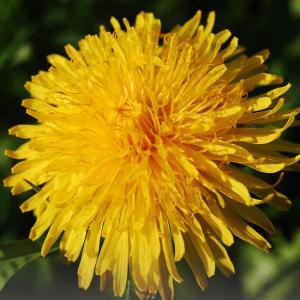

Taraxacum Officinale, the Common Dandelion, is a flowering herbaceous perennial plant of the family Asteraceae. It can be found growing in temperate regions of the world, in lawns, on roadsides, on disturbed banks and shores of water ways, and other areas with moist soils. Taraxacum Officinale is considered a weed, especially in lawns and along roadsides.
Taraxacum Officinale is native to Eurasia and now is naturalized throughout North America, southern Africa, South America, New Zealand, Australia, and India.
Taraxacum Officinale grows from generally unbranched taproots and produces one to more than ten stems that are typically 5 - 40 cm tall, but sometimes up to 70 cm tall. Plants have milky latex and the leaves are all basal: each flowering stem lacks bracts and has one single flower head. The yellow flower heads lack receptacle bracts and all the flowers, which are called florets, are ligulate and bisexual. The fruits are mostly produced by apomixis.
The leaves are 5 - 45 cm long and 1 - 10 cm wide, and are oblanceolate, oblong, or obovate in shape, with the bases gradually narrowing to the petiole. The leaf margins are typically shallowly lobed to deeply lobed and often lacerate or toothed with sharp or dull teeth.
The calyculi (the cuplike bracts that hold the florets) are composed of 12 to 18 segments: each segment is reflexed and sometimes glaucous. The lanceolate shaped bractlets are in two series, with the apices acuminate in shape. The florets number 40 to over 100 per head, having corollas that are yellow or orange -y ellow in color.
The fruits, called cypselae, range in color from olive-green or olive - brown to straw - colored to grayish, they are oblanceoloid in shape and 2 - 3 mm long with slender beaks. The fruits have 4 to 12 ribs that have sharp edges. The silky pappi, which form the parachutes, are white to silver - white in color and around 6 mm wide.
The name of the genus, Taraxacum, is derived from the Greek Taraxos (Disorder), and Akos (Remedy), on account of the curative action of the plant. A possible alternative derivation of Taraxacum is suggested in The Treasury of Botany:
"The generic name is possibly derived from the Greek Taraxo ("I have excited" or "Caused") and Achos (Pain), in allusion to themedicinal effects of the plant".
Taraxacum Officinale is native to Eurasia and now is naturalized throughout North America, southern Africa, South America, New Zealand, Australia, and India.
Taraxacum Officinale grows from generally unbranched taproots and produces one to more than ten stems that are typically 5 - 40 cm tall, but sometimes up to 70 cm tall. Plants have milky latex and the leaves are all basal: each flowering stem lacks bracts and has one single flower head. The yellow flower heads lack receptacle bracts and all the flowers, which are called florets, are ligulate and bisexual. The fruits are mostly produced by apomixis.
The leaves are 5 - 45 cm long and 1 - 10 cm wide, and are oblanceolate, oblong, or obovate in shape, with the bases gradually narrowing to the petiole. The leaf margins are typically shallowly lobed to deeply lobed and often lacerate or toothed with sharp or dull teeth.
The calyculi (the cuplike bracts that hold the florets) are composed of 12 to 18 segments: each segment is reflexed and sometimes glaucous. The lanceolate shaped bractlets are in two series, with the apices acuminate in shape. The florets number 40 to over 100 per head, having corollas that are yellow or orange -y ellow in color.
The fruits, called cypselae, range in color from olive-green or olive - brown to straw - colored to grayish, they are oblanceoloid in shape and 2 - 3 mm long with slender beaks. The fruits have 4 to 12 ribs that have sharp edges. The silky pappi, which form the parachutes, are white to silver - white in color and around 6 mm wide.
The name of the genus, Taraxacum, is derived from the Greek Taraxos (Disorder), and Akos (Remedy), on account of the curative action of the plant. A possible alternative derivation of Taraxacum is suggested in The Treasury of Botany:
"The generic name is possibly derived from the Greek Taraxo ("I have excited" or "Caused") and Achos (Pain), in allusion to themedicinal effects of the plant".
Submitted by OperaDreamhouse (June 9, 2015)
Lemon Fruit (Citrus Limon) ☸ Plants ☸ Base / General
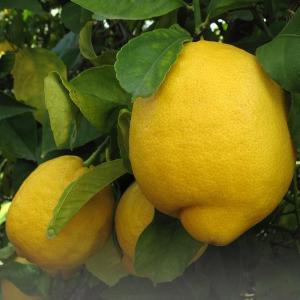

A Lemon (Citrus Limon) is a small evergreen tree native to Asia.
The juice of the Lemon is about 5% to 6% citric acid, giving the fruit its distinctive, sour taste and making it a key ingredient in drinks and foods such as Lemonade and Lemon meringue pie.
The origin of the lemon is unknown, though lemons are thought to have first grown in Assam (a region in northeast India), northern Burma, and China.
Citrus Limon is the leading acid citrus fruit, because of its very appealing color, odor and flavor. The true lemon tree reaches 10 to 20 feet in height and usually has sharp thorns on the twigs. Leaves are reddish when young, and become dark green above, light green below.
Mildly fragrant flowers may be solitary, or there may be two or more. Buds are reddish. Opened flowers have 4 or 5 petals, white on upper surface, purplish beneath.
Fruit is oval with a nipple - like protuberance and is light - yellow. It is aromatic, and dotted with oil glands.
The first substantial cultivation of lemons in Europe began in Genoa in the middle of the 15th century. The Lemon was later introduced to the Americas in 1493 when Christopher Columbus brought Lemon seeds to Hispaniola on his voyages. Spanish conquest throughout the New World helped spread Lemon seeds.
Jews entered Europe near southern Italy no later than the first century AD, during the time of Ancient Rome. However, they were not widely cultivated. They were later introduced to Persia and then to Iraq and Egypt around 700 AD.
The Lemon was first recorded in literature in a 10th - century Arabic treatise on farming, and was also used as an ornamental plant in early Islamic gardens. It was distributed widely throughout the Arab world and the Mediterranean region between 1000 and 1150.
The juice of the Lemon is about 5% to 6% citric acid, giving the fruit its distinctive, sour taste and making it a key ingredient in drinks and foods such as Lemonade and Lemon meringue pie.
The origin of the lemon is unknown, though lemons are thought to have first grown in Assam (a region in northeast India), northern Burma, and China.
Citrus Limon is the leading acid citrus fruit, because of its very appealing color, odor and flavor. The true lemon tree reaches 10 to 20 feet in height and usually has sharp thorns on the twigs. Leaves are reddish when young, and become dark green above, light green below.
Mildly fragrant flowers may be solitary, or there may be two or more. Buds are reddish. Opened flowers have 4 or 5 petals, white on upper surface, purplish beneath.
Fruit is oval with a nipple - like protuberance and is light - yellow. It is aromatic, and dotted with oil glands.
The first substantial cultivation of lemons in Europe began in Genoa in the middle of the 15th century. The Lemon was later introduced to the Americas in 1493 when Christopher Columbus brought Lemon seeds to Hispaniola on his voyages. Spanish conquest throughout the New World helped spread Lemon seeds.
Jews entered Europe near southern Italy no later than the first century AD, during the time of Ancient Rome. However, they were not widely cultivated. They were later introduced to Persia and then to Iraq and Egypt around 700 AD.
The Lemon was first recorded in literature in a 10th - century Arabic treatise on farming, and was also used as an ornamental plant in early Islamic gardens. It was distributed widely throughout the Arab world and the Mediterranean region between 1000 and 1150.
Submitted by OperaDreamhouse (June 9, 2015)
Dandelion Plant (Taraxacum Officinale) ☸ Plants ☸ Medicine / Health


The first mention of the Dandelion as a medicine is in the works of the Arabian Physicians of the tenth and eleventh centuries, who speak of it as a sort of wild Endive, under the name of Taraxcacon. In this country, we find allusion to it in the Welsh medicines of the thirteenth century. Dandelion was much valued as a medicine in the times of gerard and parkinson, and is still extensively employed.
Dandelion roots have long been largely used on the Continent, and the plant is cultivated largely in India as a remedy for liver complaints.
Dandelion roots have long been largely used on the Continent, and the plant is cultivated largely in India as a remedy for liver complaints.
Submitted by OperaDreamhouse (June 9, 2015)
Tangerine Essential Oil (Citrus Reticulata) ☸ Essential oils ☸ Base / General


Botanical Name: Citrus reticulata
Common Method of Extraction: Cold expression
Part Typically Used: Fruit fresh peel
Color: Yellow orange
Consistency: Thin
Perfumery Note: Top
Strength of Initial Aroma: Fresh, sweet, orange - like
Tangerine essential oil has the typical citrus scent - fresh, radiant, and tangy sweet. With only subtle differences, it smells a lot like the Mandarin, with some even considering them identical. In comparison to Sweet Orange, Tangerine can be seen as lighter with more candy like tones.
The Tangerine is a variety of the Mandarin Orange. You may sometimes see it on the market as Citrus x Tangerine. The oils have similar properties, but different aroma characteristics.
However, there is a slight difference. Mandarins are more yellow in color and come with pips, while Tangerines are more orange in color and come without pips. So, Mandarin essential oil is also called Tangerine essential oil. The botanical name of both of these plants is Citrus Reticulata, which shows that they are same.
As the name suggests, Mandarin plants are native to China. From there, they went to Europe and now Italy is one of the biggest producers of Mandarin oil.
The Mandarin Orange (Citrus Reticulata), also known as the Mandarin or Mandarine, is a small citrus tree with fruit resembling other oranges. Specifically reddish - orange Mandarin cultivars can be marketed as Tangerines, but this is not a botanical classification.
The tree is more drought - tolerant than the fruit. The Mandarin is tender and is damaged easily by cold. It can be grown in tropical and subtropical areas.
Mandarins are one of the four core ancestral Citrus taxa, and are thought to have evolved in Vietnam, southern China, and Japan.
Mandarins have a special place in Chinese culture as they were given as gifts to the Mandarins (the name given to Chinese officials under the king).
Mostly used in thefragrance industry. Tangerine oil doescontain limonene, which may suggest its use in household cleaners.
Chemical structure:
TheTangerine essential oil is extracted by cold compression of the fresh peels of these fruits and containsalpha thujone, alpha pinene, beta pinene, camphene, citral, citronellal, gamma terpinolene, geranial,geraniol, limonene, linalool, methyl methylanthranilate,myrcene, nerol, sabinene and terpineol.
Common Method of Extraction: Cold expression
Part Typically Used: Fruit fresh peel
Color: Yellow orange
Consistency: Thin
Perfumery Note: Top
Strength of Initial Aroma: Fresh, sweet, orange - like
Tangerine essential oil has the typical citrus scent - fresh, radiant, and tangy sweet. With only subtle differences, it smells a lot like the Mandarin, with some even considering them identical. In comparison to Sweet Orange, Tangerine can be seen as lighter with more candy like tones.
The Tangerine is a variety of the Mandarin Orange. You may sometimes see it on the market as Citrus x Tangerine. The oils have similar properties, but different aroma characteristics.
However, there is a slight difference. Mandarins are more yellow in color and come with pips, while Tangerines are more orange in color and come without pips. So, Mandarin essential oil is also called Tangerine essential oil. The botanical name of both of these plants is Citrus Reticulata, which shows that they are same.
As the name suggests, Mandarin plants are native to China. From there, they went to Europe and now Italy is one of the biggest producers of Mandarin oil.
The Mandarin Orange (Citrus Reticulata), also known as the Mandarin or Mandarine, is a small citrus tree with fruit resembling other oranges. Specifically reddish - orange Mandarin cultivars can be marketed as Tangerines, but this is not a botanical classification.
The tree is more drought - tolerant than the fruit. The Mandarin is tender and is damaged easily by cold. It can be grown in tropical and subtropical areas.
Mandarins are one of the four core ancestral Citrus taxa, and are thought to have evolved in Vietnam, southern China, and Japan.
Mandarins have a special place in Chinese culture as they were given as gifts to the Mandarins (the name given to Chinese officials under the king).
Mostly used in thefragrance industry. Tangerine oil doescontain limonene, which may suggest its use in household cleaners.
Chemical structure:
TheTangerine essential oil is extracted by cold compression of the fresh peels of these fruits and containsalpha thujone, alpha pinene, beta pinene, camphene, citral, citronellal, gamma terpinolene, geranial,geraniol, limonene, linalool, methyl methylanthranilate,myrcene, nerol, sabinene and terpineol.
Submitted by OperaDreamhouse (June 8, 2015)
Green Tea Extract (Camellia Sinensis) ☸ Ingredients ☸ Base / General
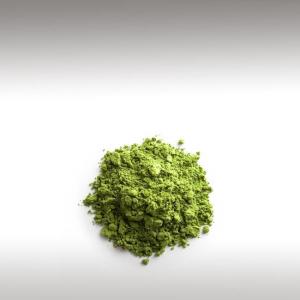

A Green Tea Extract is a herbal derivative from Green Tea Leaves (Camellia Sinensis). Containing antioxidant ingredients - mainly Green Tea catechins (GTC). Green Tea and its derivatives are sometimes used as dietary supplements and in alternative medicine.
Camellia Sinensis plant is originally cultivated in East Asia, this plant grows as large as a shrub or tree. Today, Camellia Sinensis grows throughout Asia and parts of the Middle East and Africa.
Camellia Sinensis is a species of evergreen shrub or small tree whose leaves and leaf buds are used to produce tea. It is of the genus Camellia of flowering plants in the family Theaceae. Common names include "Tea Plant", "Tea Shrub".
Camellia Sinensis is an evergreen shrub or small tree that is usually trimmed to below 2 m when cultivated for its leaves. It has a strong taproot. The flowers are yellow - white, 2,5 - 4 cm in diameter, with 7 to 8 petals.
White Tea, Yellow Tea, Green Tea, Oolong, Pu-erh Tea and Black Tea are all harvested from one or the other, but are processed differently to attain varying levels of oxidation. Kukicha (Twig Tea) is also harvested from Camellia Sinensis, but uses twigs and stems rather than leaves.
The useful parts of green tea are the leaf bud, leaf, and stem. Green tea is not fermented and is produced by steaming fresh leaves at high temperatures. During this process, it is able to maintain important molecules called polyphenols, which seem to be responsible for many of the benefits of Green Tea.
The leaves are 4-15 cm long and 2 - 5 cm broad. Fresh leaves contain about 4% Caffeine. The young, light green leaves are preferably harvested for tea production: they have short white hairs on the underside. Older leaves are deeper green.
Camellia Sinensis plant is originally cultivated in East Asia, this plant grows as large as a shrub or tree. Today, Camellia Sinensis grows throughout Asia and parts of the Middle East and Africa.
Camellia Sinensis is a species of evergreen shrub or small tree whose leaves and leaf buds are used to produce tea. It is of the genus Camellia of flowering plants in the family Theaceae. Common names include "Tea Plant", "Tea Shrub".
Camellia Sinensis is an evergreen shrub or small tree that is usually trimmed to below 2 m when cultivated for its leaves. It has a strong taproot. The flowers are yellow - white, 2,5 - 4 cm in diameter, with 7 to 8 petals.
White Tea, Yellow Tea, Green Tea, Oolong, Pu-erh Tea and Black Tea are all harvested from one or the other, but are processed differently to attain varying levels of oxidation. Kukicha (Twig Tea) is also harvested from Camellia Sinensis, but uses twigs and stems rather than leaves.
The useful parts of green tea are the leaf bud, leaf, and stem. Green tea is not fermented and is produced by steaming fresh leaves at high temperatures. During this process, it is able to maintain important molecules called polyphenols, which seem to be responsible for many of the benefits of Green Tea.
The leaves are 4-15 cm long and 2 - 5 cm broad. Fresh leaves contain about 4% Caffeine. The young, light green leaves are preferably harvested for tea production: they have short white hairs on the underside. Older leaves are deeper green.
Different leaf ages produce differing tea qualities, since their chemical compositions are different. Usually, the tip (bud) and the first two to three leaves are harvested for processing. This hand picking is repeated every one to two weeks.
Chemical structure:
Green Tea Extract is a bioflavonoid rich, potent extract used primarily for fightingfree radicals. It contains a high content of polyphenols, which are a class of bioflavonoids. Green Tea Extract contains a potent antioxidant, EGCG, which is over 200 times more powerful than Vitamin E .
The cardinal antioxidative ingredient in the Green Tea Extract is Green Tea catechins (GTC), which comprise four major epicatechin derivatives: namely, epicatechin (EC), epigallocatechin (EGC), epicatechin gallate (ECG), and epigallocatechin gallate (EGCG). Of which, EGCG accounts for more than 40% of the total content.
Other components include three kinds of flavonoids, known as kaempferol, quercetin, and myricetin. A remarkably higher content of myricetin is detected in tea and its extracts than in many other plants, and this high concentration of myricetin may have some implications with the bioactivity of Tea and its extracts.
The more the leaves are fermented, the lower the polyphenol content and the higher the caffeine content. Green Tea has the highest polyphenol content while black tea has roughly 2 - 3 times the caffeine content of Green Tea.
Caffeine may be excluded in Green Tea Extracts in order to avoid side - effects: caffeine - free Green Tea Extract supplements are now available.
Types of Green Tea Extracts:
Strong infusions: During the strong infusion Green Tea leaves are processed by soaking in the aqueous solution of Alcohol (the aspect content is about 2% w/w).
Soft Extracts: To obtain soft extracts, the solution made by strong infusion beforehand is further concentrated to 20–25% (the catechin content is about 20% w/w).
Dry Extracts: After the strong infusions have been concentrated to 40 - 50% solids (the catechin content is above 25% w/w), they are sprayed and then become dehydrated Extract and powder.
Chemical structure:
Green Tea Extract is a bioflavonoid rich, potent extract used primarily for fightingfree radicals. It contains a high content of polyphenols, which are a class of bioflavonoids. Green Tea Extract contains a potent antioxidant, EGCG, which is over 200 times more powerful than Vitamin E .
The cardinal antioxidative ingredient in the Green Tea Extract is Green Tea catechins (GTC), which comprise four major epicatechin derivatives: namely, epicatechin (EC), epigallocatechin (EGC), epicatechin gallate (ECG), and epigallocatechin gallate (EGCG). Of which, EGCG accounts for more than 40% of the total content.
Other components include three kinds of flavonoids, known as kaempferol, quercetin, and myricetin. A remarkably higher content of myricetin is detected in tea and its extracts than in many other plants, and this high concentration of myricetin may have some implications with the bioactivity of Tea and its extracts.
The more the leaves are fermented, the lower the polyphenol content and the higher the caffeine content. Green Tea has the highest polyphenol content while black tea has roughly 2 - 3 times the caffeine content of Green Tea.
Caffeine may be excluded in Green Tea Extracts in order to avoid side - effects: caffeine - free Green Tea Extract supplements are now available.
Types of Green Tea Extracts:
Strong infusions: During the strong infusion Green Tea leaves are processed by soaking in the aqueous solution of Alcohol (the aspect content is about 2% w/w).
Soft Extracts: To obtain soft extracts, the solution made by strong infusion beforehand is further concentrated to 20–25% (the catechin content is about 20% w/w).
Dry Extracts: After the strong infusions have been concentrated to 40 - 50% solids (the catechin content is above 25% w/w), they are sprayed and then become dehydrated Extract and powder.
The leftovers - water content, which is less then 5% w/w, and the Extract - are usually processed as a powder containing inert processing aids to become suitable for a variety of uses ( tablets, capsules, dry mixes).
Submitted by OperaDreamhouse (June 8, 2015)
Page 21 of 48

